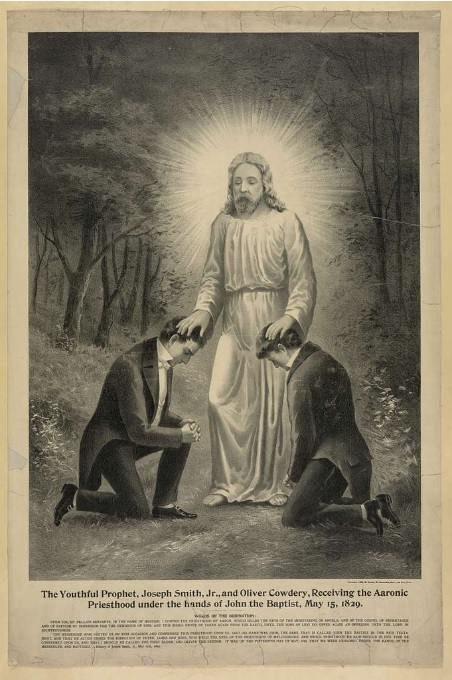In the realm of religious doctrine, there are often complex and controversial topics that require careful navigation. One such topic is Doctrine and Covenants 132, which explores themes of faith, marriage, and exaltation. This text has sparked intense discussions and interpretations within the religious community.
We delve into the historical context, explore the concept of eternal marriage and celestial exaltation, and examine the controversial issue of plural marriage. Additionally, we analyze the sealing power and its significance, as well as the impact of these teachings on women.
Through a modern lens, we aim to foster open dialogue and understanding, providing a safe space for readers to engage with these complex doctrines.
Historical Context
The historical context of D&C 132 provides crucial insights into its origins and significance. Understanding the historical interpretation of this doctrine is essential for navigating its complexities.

Doctrine and Covenants 132 was revealed by Joseph Smith in 1843 and is considered one of the most controversial sections of the LDS Church's scripture. It outlines the principles and practices of eternal marriage, including the concept of plural marriage.
The cultural influences of the time, such as the prevalence of polygamy in 19th-century America and the desire for eternal family relationships, undoubtedly played a role in the development of this doctrine. By examining the historical context and cultural influences surrounding the revelation of Doctrine and Covenants 132, we can gain a deeper understanding of its significance and implications for the LDS Church.
Transitioning into the subsequent section on 'eternal marriage', we will explore how this doctrine has been interpreted and practiced throughout history.
Eternal Marriage
Eternal marriage, as outlined in D&C 132, is a foundational concept within the LDS Church that explores the principles and practices of eternal unions. This doctrine teaches that marriages can extend beyond mortal life and continue into the eternities.
Here are four key aspects of eternal marriage:
- Celestial Marriage: Eternal marriage is often referred to as celestial marriage, as it is the highest form of marriage within the LDS belief system. It is considered essential for exaltation and eternal progression.
- Eternal Sealing: Through the ordinance of eternal sealing performed in LDS temples, couples are bound together for time and all eternity. This sealing is believed to create an eternal family unit, connecting generations past, present, and future.
- Commitment and Unity: Eternal marriage emphasizes the importance of a committed and united relationship between spouses. It encourages couples to work together to strengthen their marriage, deepen their love, and develop a Christ-centered partnership.
- Family Focus: Eternal marriage places a strong emphasis on the importance of family. It teaches that the family unit can continue beyond death, allowing for eternal relationships and the opportunity to progress together as a family.
As we delve into the complexities of eternal marriage, it sets the stage for understanding the concept of celestial exaltation, which we will explore in the subsequent section.

Celestial Exaltation
Celestial exaltation, a profound concept within the LDS Church, encompasses the ultimate state of divine glory and eternal progression for faithful individuals. It represents the highest degree of celestial rewards and blessings that can be achieved in the afterlife.
According to LDS doctrine, those who receive celestial exaltation will inherit the fullness of God's glory and become joint-heirs with Christ. This concept is rooted in the belief that through obedience to the principles and ordinances of the gospel, individuals can achieve exaltation and eternal life in the presence of God.
Celestial exaltation is closely linked to the concept of eternal progression, which emphasizes the eternal growth and development of individuals in their pursuit of becoming more like God. It is a promise of eternal joy, fulfillment, and continued progression in the presence of God and loved ones.
Plural Marriage
Plural marriage, a controversial aspect of LDS Church doctrine, explores the practice of having multiple wives and its implications on the eternal progression of faithful individuals. This practice, also known as polygamy, has been a subject of scrutiny and debate both within and outside the Church.
To understand the complexities surrounding plural marriage, it is important to consider the following:
- Historical context: Plural marriage was introduced in the early days of the Church as a divine commandment. It was seen as a way to increase posterity and ensure the continuation of the faith.
- Spiritual implications: Supporters argue that plural marriage allows individuals to fulfill their eternal potential by participating in a higher form of celestial marriage. Critics, on the other hand, question the fairness and inequality inherent in such a practice.
- Social dynamics: Plural marriage had profound effects on the relationships within families, creating complex dynamics between wives and children. It also had implications for the broader society, often leading to tension and conflict.
- Contemporary perspective: The Church officially discontinued the practice of plural marriage in 1890. However, its historical legacy and ongoing theological discussions continue to shape the understanding of marriage and family within the faith.
Navigating the complexities of plural marriage requires a nuanced understanding of historical, spiritual, social, and contemporary perspectives. By engaging in open dialogue and respectful exploration, individuals can gain a deeper understanding of this controversial aspect of LDS Church doctrine.
Sealing Power
The concept of sealing power holds great significance in the context of eternal marriage within the Doctrine and Covenants 132. It encompasses the authority to bind individuals together in a sacred covenant that extends beyond mortality, uniting them in the eternities.

This power is believed to be a divine gift bestowed upon certain individuals, granting them the ability to perform sealing ordinances and ensure the eternal nature of relationships.
Understanding the complexities and implications of this sealing power is crucial in comprehending the teachings and controversies surrounding D&C 132.
Eternal Marriage Significance
The doctrine of eternal marriage in D&C 132 emphasizes the significance of the sealing power in several ways.
Eternal Marriage Symbolism: The sealing power is seen as a sacred authority that binds individuals together for eternity, reflecting the eternal nature of marriage and the divine purpose of families.
Eternal Marriage Challenges: The doctrine of eternal marriage acknowledges that challenges and trials may arise within a marriage but emphasizes the importance of commitment, growth, and forgiveness to strengthen the eternal bond between spouses.
Eternal Blessings: The sealing power enables couples to receive eternal blessings and inheritances, including the opportunity for eternal progression and the ability to be together as a family throughout eternity.
Eternal Perspective: The doctrine of eternal marriage encourages individuals to view their marital relationships through an eternal lens, recognizing that the decisions and actions made in this life have eternal consequences.
Understanding the significance of the sealing power in the context of eternal marriage helps individuals navigate the complexities of relationships and strive for eternal unity and happiness.
Moving on to the subsequent section about 'authority to seal', we explore the role of priesthood authority in the sealing ordinances.
Authority to Seal
The doctrine of eternal marriage in D&C 132 further explores the authority to seal, highlighting the role of priesthood authority in the eternal bond of marriage.
This concept emphasizes the importance of hierarchical structure within the LDS Church, where individuals are given the authority to perform sealing blessings.
The authority to seal is believed to be derived from heavenly powers and is granted to those who hold the priesthood. This authority allows individuals to perform sacred ordinances that bind families together for eternity.

The hierarchical nature of this authority ensures that these sealing blessings are performed in accordance with God's will and are valid in the eternities.
The doctrine of authority to seal serves as a foundational principle in understanding the eternal nature of marriage within the LDS faith.
Interpretation and Application
Through careful analysis and contextual understanding, scholars and theologians navigate the complexities of interpreting and applying the teachings found in Doctrine and Covenants 132.
This scriptural text, which deals with the principle of plural marriage, presents various challenges in interpretation due to its historical context and the sensitive nature of the topic. However, it also holds potential modern-day relevance, provoking discussions on marriage, gender roles, and the evolving nature of doctrine and revelation.
In order to engage with this text responsibly and safely, scholars employ a range of interpretive approaches, including historical-critical analysis, comparative study of other scriptural texts, ethical considerations, and consultation with religious leaders.
These methods help to ensure that the teachings of D&C 132 are understood in their appropriate context and applied in a manner that promotes the well-being and dignity of all individuals involved.
Controversial Interpretations
Scholars and theologians grapple with the complexities of Doctrine and Covenants 132, employing various interpretive approaches, as they navigate the controversial interpretations surrounding this scripture's teachings on plural marriage.
These controversial interpretations stem from the ethically challenging aspects of the doctrine, particularly in relation to the treatment of women. Some argue that the scripture merely provides guidelines for the practice of plural marriage, while others contend that it is a commandment with continued relevance.
The theological implications of these interpretations are significant, as they shape the understanding and application of the doctrine within the faith community.
These divergent views have led to ongoing debates and discussions among scholars, theologians, and members of the faith regarding the validity and interpretation of this scripture.
Understanding the controversial interpretations is crucial in order to comprehend the subsequent impact on women within the context of plural marriage.
Impact on Women
The impact of Doctrine and Covenants 132 on women is a complex and multifaceted subject that has sparked significant debate. One of the key points of discussion revolves around the challenging of women's roles within the context of the doctrine. Understanding the historical context and interpretation of this doctrine is essential for a comprehensive analysis of its impact on women.
Women's Roles Challenged

In the realm of religious doctrine, questions arise regarding the impact on women as their roles within the context of D&C 132 are challenged. The interpretation and application of this scripture have often led to debates and controversies surrounding women's roles within the church.
Here are four key aspects to consider:
- Gender equality: The questioning of women's roles within the context of Doctrine and Covenants 132 has sparked discussions about the need for gender equality within religious institutions.
- Women's empowerment: Some argue that the rigid interpretations of this scripture limit women's agency and potential for leadership and decision-making roles within the church.
- Societal implications: The impact of these challenges extends beyond religious boundaries, as they reflect broader societal debates about women's rights, autonomy, and equal opportunities.
- Theological perspectives: Scholars and theologians offer diverse interpretations, analyzing the historical context, language, and cultural influences to understand the intent and implications of women's roles within the doctrine.
These ongoing discussions highlight the complexities and importance of examining the impact on women as their roles within the context of Doctrine and Covenants 132 are challenged.
Historical Context and Interpretation
The historical context and interpretation of Doctrine and Covenants 132 significantly shape the understanding of women's roles within the discourse. The interplay of faith and culture, as well as evolving perspectives, has influenced the way women are perceived and treated within the Mormon tradition.
Doctrine and Covenants 132, which addresses the practice of polygamy, has been a subject of controversy, particularly regarding its impact on women. The historical context reveals that the revelation was given at a time when polygamy was practiced by some members of the Church of Jesus Christ of Latter-day Saints. This historical context has led to various interpretations, with some arguing that the revelation is a commandment from God, while others view it as a product of its time and culture.
These differing interpretations have had a profound impact on women's roles, with some women embracing and defending polygamy as part of their religious faith, while others have pushed for more egalitarian interpretations that prioritize women's agency and autonomy. The evolving perspectives on this issue have led to a more nuanced understanding of women's roles within the Mormon tradition, highlighting the complexities of reconciling faith and culture.
Empowering or Oppressive?
One viewpoint regarding the impact of D&C 132 on women is that it can be seen as either empowering or oppressive. The interpretation of this scripture within a patriarchal structure has shaped the experiences of women within the Mormon faith.
Empowerment through eternal marriage: Some argue that the doctrine empowers women by emphasizing the importance of marriage and family, offering them a divine role as mothers and wives.
Oppression through polygamy: However, the practice of polygamy, which is discussed in D&C 132, has been seen as oppressive towards women. It can lead to inequality, jealousy, and emotional turmoil.
Control over women's sexuality: The scripture places an emphasis on female chastity and fidelity, which can be seen as a form of control over women's sexuality.

Limited leadership roles: The patriarchal structure of the LDS Church limits women's access to leadership positions and decision-making processes, which can be perceived as oppressive.
Modern Perspectives
A comprehensive exploration of Doctrine and Covenants 132 requires a thorough examination of the modern perspectives shaping its interpretation.
In recent years, cultural shifts have brought about significant changes in societal norms and values, which in turn have influenced how individuals understand and interpret religious texts.
Modern perspectives on D&C 132 reflect a more inclusive and egalitarian approach, as society has become increasingly sensitive to issues of gender equality and individual autonomy. Scholars and theologians now explore alternative interpretations of the Scripture, seeking to reconcile the teachings with contemporary understandings of love, consent, and agency.
These modern perspectives challenge traditional interpretations that may have perpetuated harmful dynamics and inequality.
As the world continues to evolve, it is essential to consider these modern perspectives when engaging with the complexities of Doctrine and Covenants 132.
Open Dialogue and Understanding
Continuing the exploration of modern perspectives on Doctrine and Covenants 132, an essential aspect to consider is fostering open dialogue and understanding. This approach allows individuals to engage in thoughtful conversations about the controversial aspects of the doctrine while promoting religious freedom and respecting diverse beliefs.

Here are four key points to consider:
- Respectful Listening: Encouraging open dialogue means actively listening to others without judgment or preconceived notions. This creates a safe space for individuals to share their thoughts and concerns.
- Valuing Diverse Perspectives: Recognizing that different individuals may interpret scripture differently is crucial. Embracing diverse perspectives fosters understanding and empathy, even in the face of disagreement.
- Cultivating Empathy: Engaging in open dialogue requires empathy, the ability to understand and share the feelings of others. This helps bridge gaps and build connections, enabling productive conversations.
- Promoting Religious Freedom: Open dialogue ensures that individuals feel safe to express their beliefs without fear of persecution or discrimination. Respecting religious freedom allows for a more inclusive and tolerant society.
Frequently Asked Questions
How Did the Historical Context of the Time Influence the Writing and Interpretation of D&C 132?
The historical context of the time played a significant role in influencing both the writing and interpretation of Doctrine and Covenants 132. This influence shaped the understanding and application of the doctrine within the context of the society in which it was revealed.
What Is the Significance of Eternal Marriage Within the Teachings of Doctrine and Covenants 132?
Doctrine and Covenants 132 teaches the principle of eternal marriage within The Church of Jesus Christ of Latter-day Saints. It emphasizes the idea that through the holy priesthood, couples can be sealed for time and eternity, allowing their relationships to extend beyond mortal life. This doctrine underscores the significance of eternal families, with the belief that such unions align with God's plan and provide a path to exaltation. The section addresses mortal death, emphasizing the eternal perspective and reliance on the Holy Ghost for confirmation of these teachings. Overall, Doctrine and Covenants 132 guides believers in forming eternal bonds and prioritizing family relationships in accordance with divine commandments.
How Does the Concept of Celestial Exaltation Relate to the Doctrine Discussed in D&C 132?
The concept of celestial exaltation, as outlined in Doctrine and Covenants 132, is closely linked to the practice of plural marriage. This doctrine teaches that, under the proper authority and in accordance with divine law, a man may marry multiple wives. The Lord is believed to have commanded this practice for specific purposes, such as raising a righteous posterity. The emphasis is on entering into the marriage covenant through proper channels, recognizing divine authority, and ensuring that families are sealed for eternity. The ultimate goal is for individuals and families to progress spiritually and attain the highest degree of glory, known as the celestial kingdom, in the afterlife.
How Did the Practice of Plural Marriage Come About in the Early Days of the Church of Jesus Christ of Latter-Day Saints?
The practice of plural marriage, or polygamy, originated in the early days of The Church of Jesus Christ of Latter-day Saints (LDS Church) under the leadership of Joseph Smith. Smith claimed to have received a revelation from the "Lord thy God" that plural marriage was a divine commandment for achieving the highest level of glory in the afterlife, the celestial kingdom. This practice, akin to biblical figures like Abraham, was considered a restoration of ancient principles. Plural marriage was followed by many early LDS Church leaders, including Brigham Young. However, due to societal opposition and legal challenges, the LDS Church officially abandoned polygamy in the late 19th century. Today, monogamous marriage is the accepted standard in the LDS Church, with plural marriage being strictly prohibited.
What Is the Sealing Power and How Is It Connected to the Teachings in D&C 132?
The sealing power, as outlined in Doctrine and Covenants 132, is a crucial element of the new and everlasting covenant in Latter-day Saint theology. This power, associated with eternal marriage and family unity beyond mortality, is granted to individuals holding the High Priesthood. Through this authority, individuals can perform ordinances that bind families together for eternity. The term "holy spirit of promise" is connected to the sealing power, representing the divine confirmation of the validity of these ordinances. In essence, the sealing power ensures that covenants made are not only recognized in this life but are binding in the eternities, emphasizing the eternal nature of the sacred ordinances.






